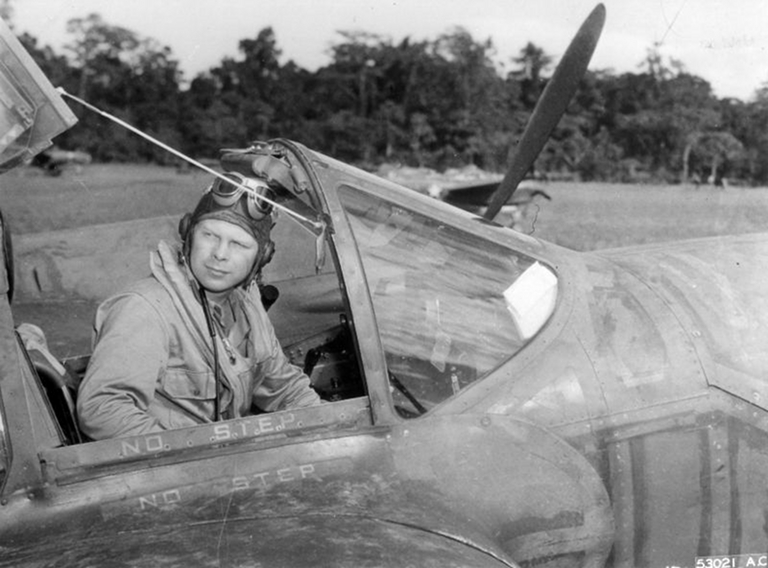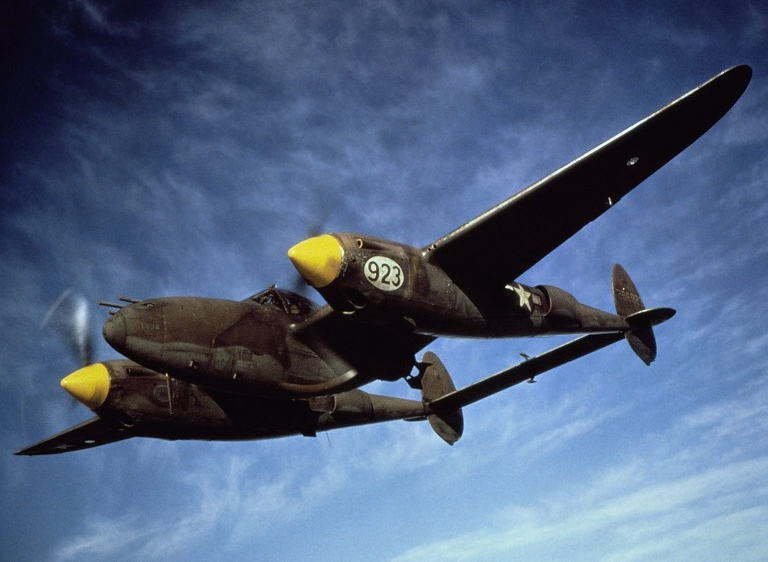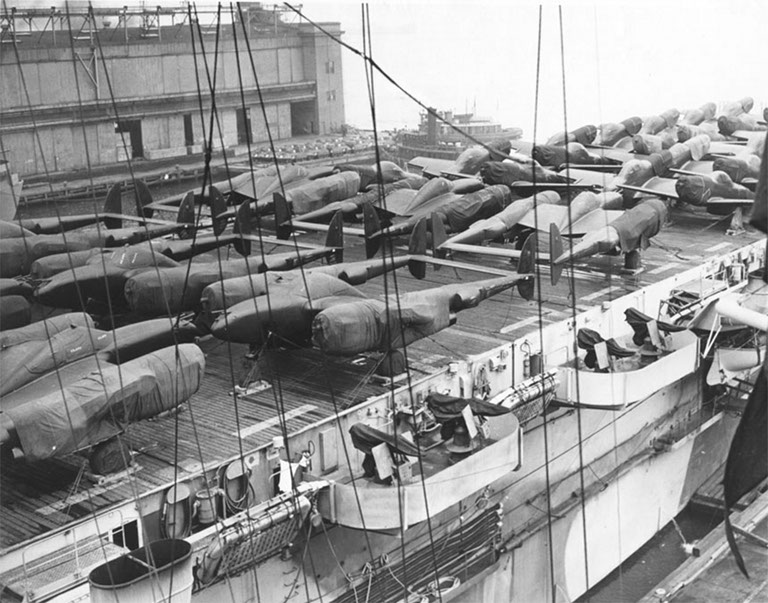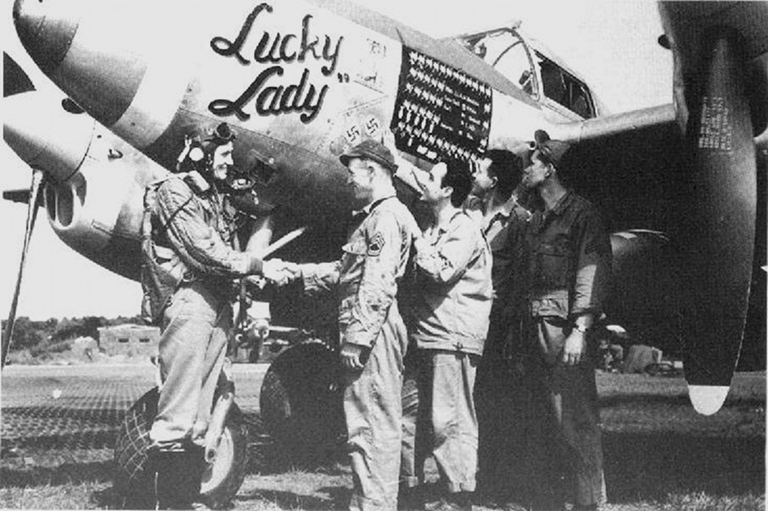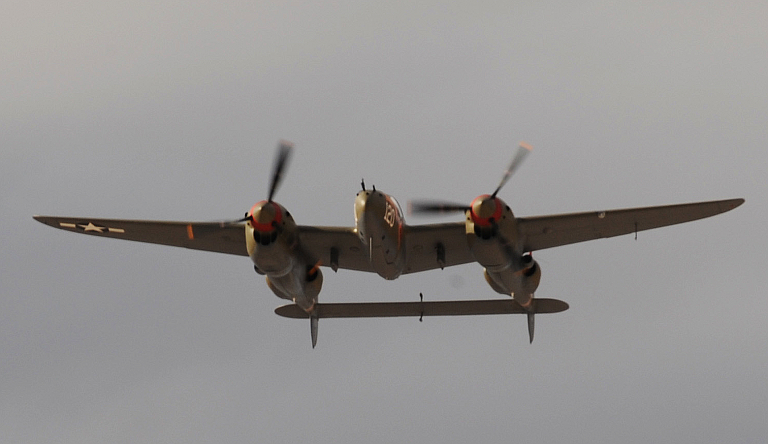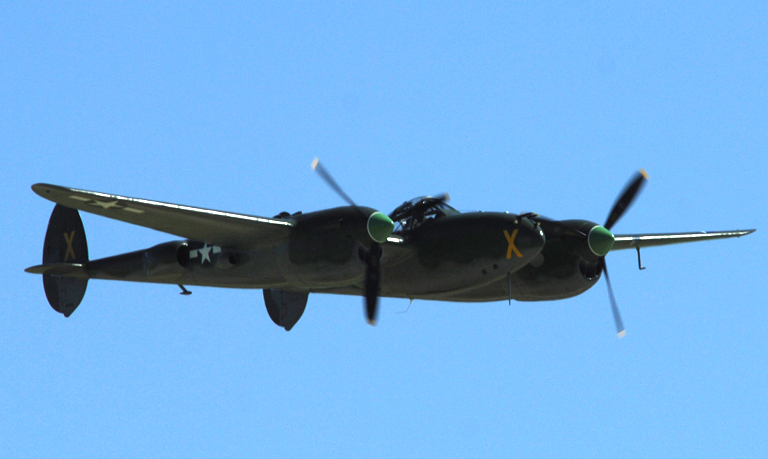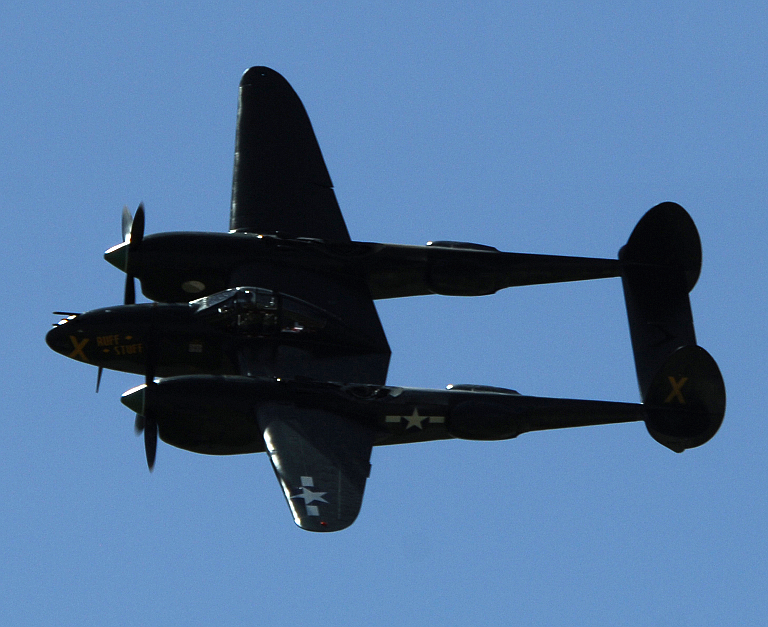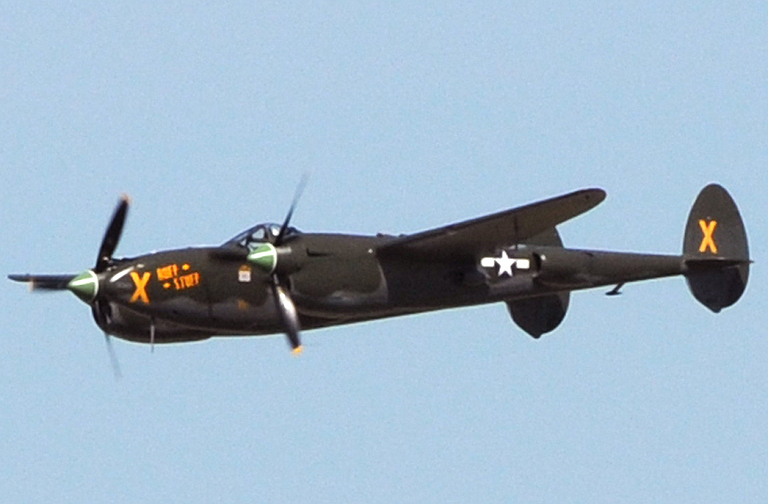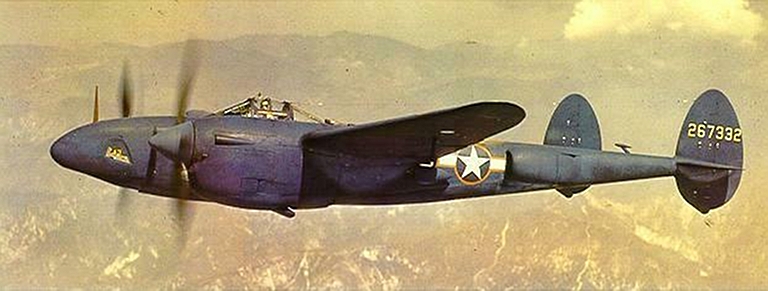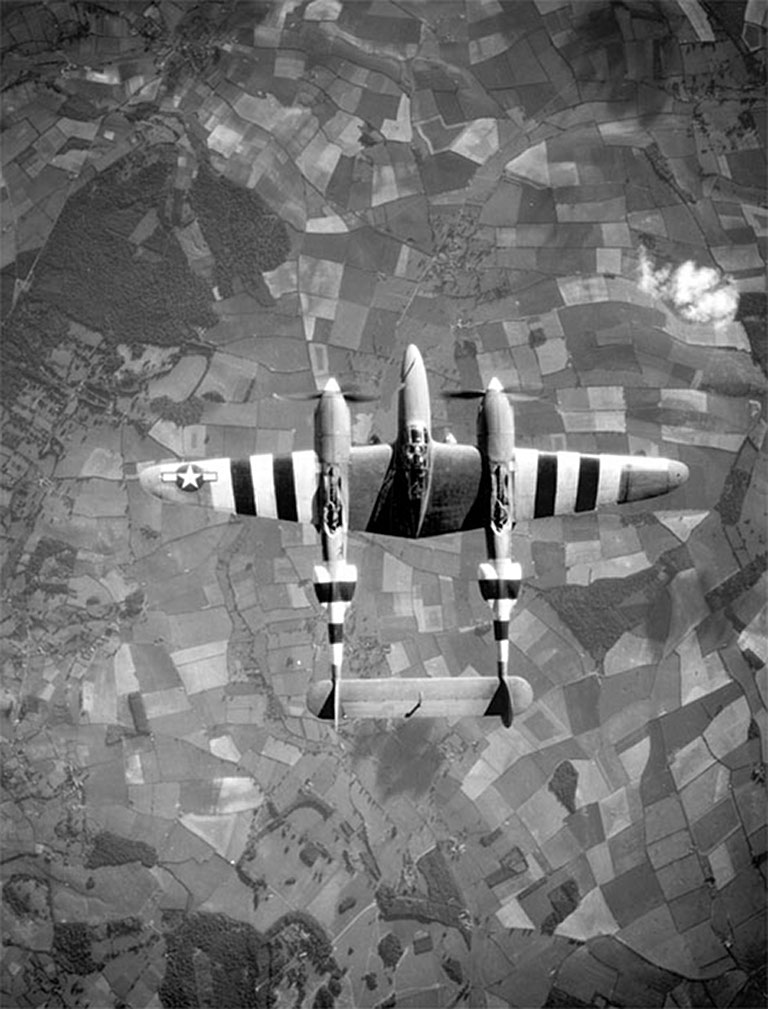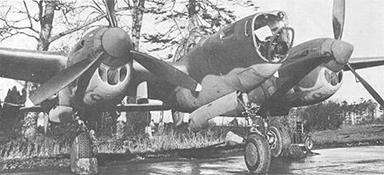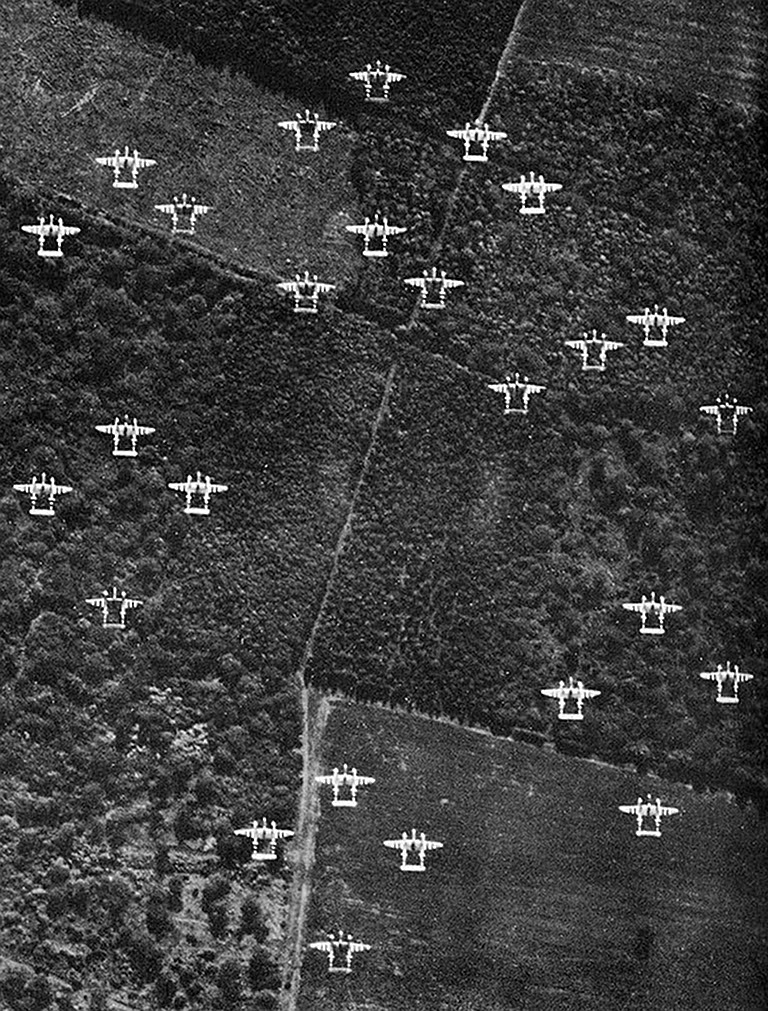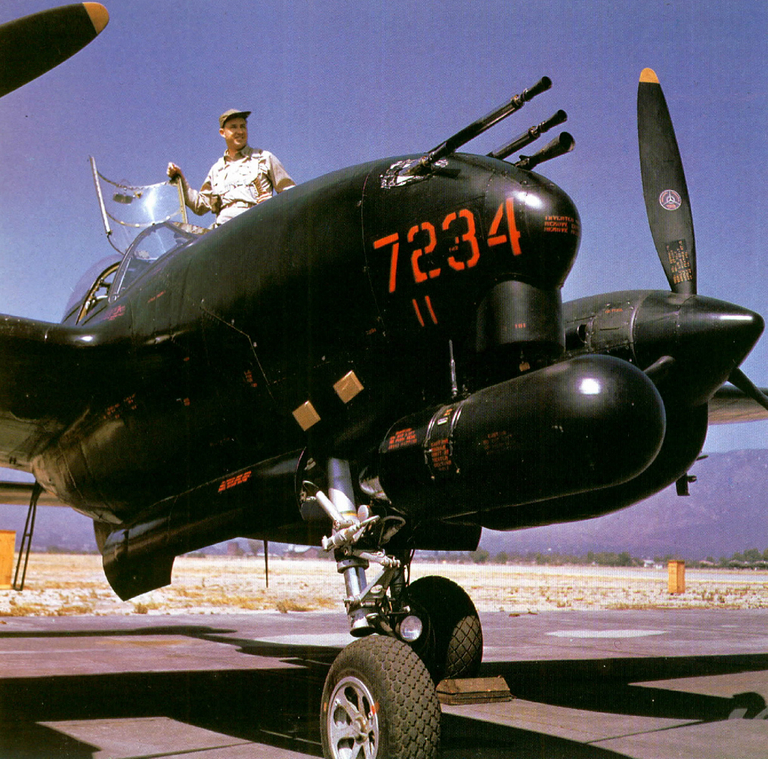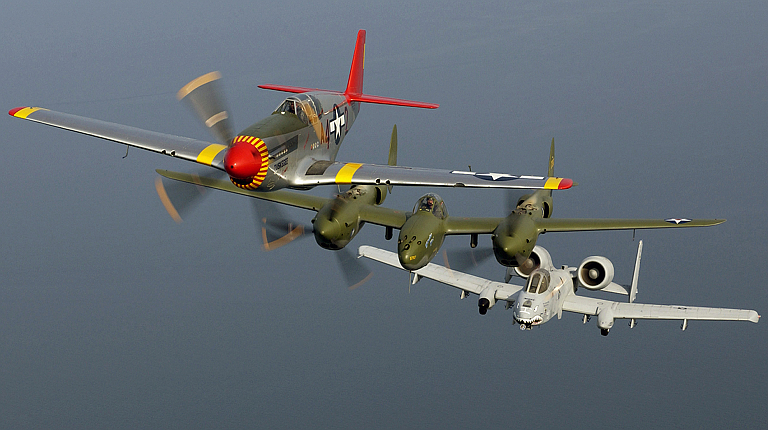|
||||||||||||||||||||||
![Home - Air Power Australia Website [Click for more ...]](APA/APA-Title-Main.png) |
||||||||||||||||||||||
![Sukhoi PAK-FA and Flanker Index Page [Click for more ...]](APA/flanker.png) |
![F-35 Joint Strike Fighter Index Page [Click for more ...]](APA/jsf.png) |
![Weapons Technology Index Page [Click for more ...]](APA/weps.png) |
![News and Media Related Material Index Page [Click for more ...]](APA/media.png) |
|||||||||||||||||||
![Surface to Air Missile Systems / Integrated Air Defence Systems Index Page [Click for more ...]](APA/sams-iads.png) |
![Ballistic Missiles and Missile Defence Page [Click for more ...]](APA/msls-bmd.png) |
![Air Power and National Military Strategy Index Page [Click for more ...]](APA/strategy.png) |
![Military Aviation Historical Topics Index Page [Click for more ...]](APA/history.png)
|
![Intelligence, Surveillance and Reconnaissance and Network Centric Warfare Index Page [Click for more ...]](APA/isr-ncw.png) |
![Information Warfare / Operations and Electronic Warfare Index Page [Click for more ...]](APA/iw.png) |
![Systems and Basic Technology Index Page [Click for more ...]](APA/technology.png) |
![Related Links Index Page [Click for more ...]](APA/links.png) |
|||||||||||||||
![Homepage of Australia's First Online Journal Covering Air Power Issues (ISSN 1832-2433) [Click for more ...]](APA/apa-analyses.png) |
||||||||||||||||||||||
| Last Updated: Mon Jan 27 11:18:09 UTC 2014 | ||||||||||||||||||||||
|
||||||||||||||||||||||
|
Der
Gabelschwanz
Teufel
Assessing the Lockheed P-38 Lightning Technical Report APA-TR-2010-1201 |
| by
Dr
Carlo
Kopp, AFAIAA,
SMIEEE,
PEng December, 2010 Updated April, 2012 Additions by Corey C. Jordan, 1999. Text and Diagrams © 1992, 1999 Carlo Kopp, Text and Diagrams © 1999 Corey C. Jordan; Updated 2010 |
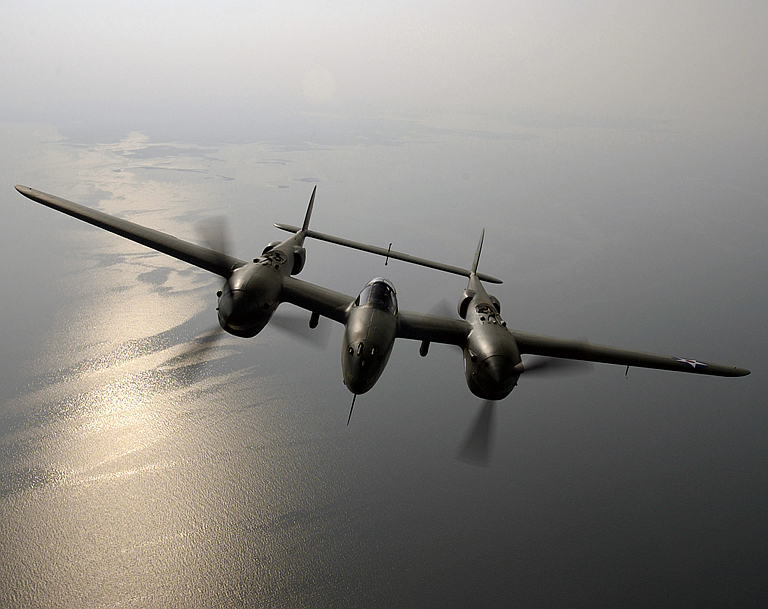 P-38F-1-LO Lightning Glacier Girl
94th FS/14th FG in 2004. This aircraft was abandoned during
operation Bolero in 1942 on a glacier in Greenland, and recovered in
1992 following an excavation from a depth of 270 ft of ice (U.S.
Air Force image by TSgt Ben Bloker).
|
|
|
|
IntroductionThe contribution of Lockheed's twin-boom P-38 Lightning fighter to the crucial air battles of World War II has been consistently understated for the last five decades. Receiving far less publicity than its single engined stablemate, the P-51, the big twin fought the most important air battles of the 1943 to 1944 period and was a key element in breaking the back of Axis air power over Germany, and in the Mediterranean and the Pacific. The P-38 excelled in that design parameter which is pivotal to fighting a strategic air war, its combat radius in excess of 700 NM (1) had no equivalent in either camp. The Lightning's combat radius was exploited repeatedly and surprisingly, the Lightning repeatedly succeeded in catching its opponents off guard. Both in the Pacific and the Mediterranean, the P-38 provided long range escort for heavy bombers, long range fighter sweeps deep into hostile airspace and interdiction of surface targets. In the UK, the P-38 wings initially provided long range escort for the 8th Air Force, in that critical phase of the daylight bombing offensive, when Luftwaffe strength was at its best, and US bomber losses began to reach unsustainable proportions. The presence of the P-38 allowed the offensive to continue at a point, where it may have been scaled down due disproportionate attrition. The Lockheed P-38 was a complex aircraft, using innovative
technology,
which experienced a painful and protracted development phase and in the
end, was denied the credit which it deserved for the importance of its
role. This becomes all the more apparent upon closer examination. |
Early
Development - the XP-38 and YP-38
|
Baptism of Fire
- the P-38D and E
|
The Fork-Tailed Devil - the P-38F, G and H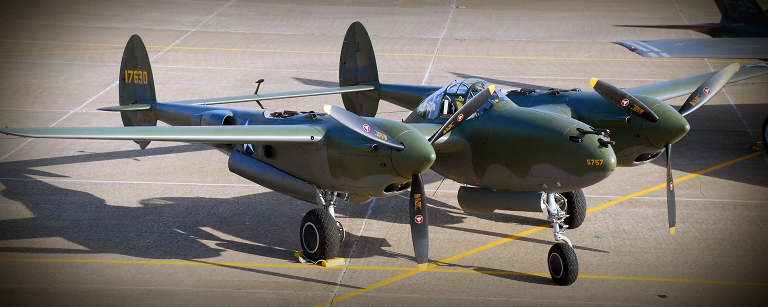 P-38F-1-LO Lightning Glacier Girl 94th FS/14th FG. This aircraft is the only flyable early variant in existence at this time (U.S. Air Force image). P-38F deliveries commenced in March 1942, this variant being fitted with F-4 model engines rated at 1,225 HP and equipped with pylons for 165 USG drop tanks. Combat flaps were fitted, this facility allowing partial flap deployment at maneuver speeds to increase turn rate. The P-38F was followed in production by the P-38G from August 1942. The P-38G had F-10 engines rated at 1,325 HP, a 300 psi Oxygen system using three bottles in the booms, strengthened pylons for 300 USG drop tanks and a larger combat flap envelope. The mixed P-38E/F force was deployed to New Guinea, while the UK based aircraft were redeployed to North Africa for the Torch landings. In the Pacific, the P-38 quickly demonstrated its superiority over the A6M3 Hamp (Zero) and Ki-43 Oscar. The P-40's and P-39's suffered heavy attrition in the defense of Port Moresby, and the arrival of the P-38 late in 1942 saw the odds swing in favor of Gen. Kenney's 5th Air Force. The P-38 first engaged the Japanese on the 27th December, destroying 12 aircraft and claiming four probables in a sortie over Buna. By early 1943, several P-38 pilots reached ace status, including Richard Bong, later to become the leading US ace of the war. Equipping the 9th and 39th FS of the 49th and 35th Fighter Groups respectively, these aircraft played a major role in the March 1943 Battle of the Bismarck Sea, stripping the Japanese convoy of its fighter cover. 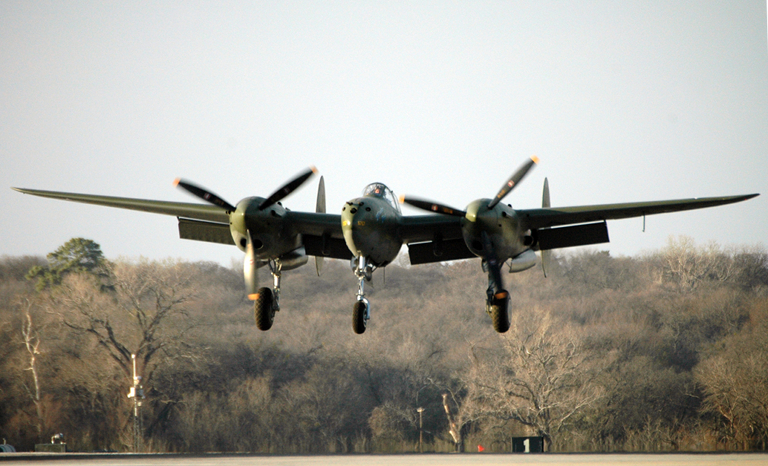 P-38F-1-LO Lightning Glacier Girl
94th
FS/14th FG on final approach (U.S. Air Force
image). In August, 1942, the Americans landed on Guadalcanal and the
P-38 was
deployed there soon after with the 13th AF, flying long range fighter
missions
into the Solomons. Flying from Guadalcanal, in April, 1943, 16 P-38Fs
of
the 70th and 339th Fighter Squadrons flew 350 NM to Bouganville, at low
level, to engage and destroy a Japanese flight carrying Adm Isoroku
Yamamoto,
Japan's leading naval strategist. In the engagement, Capts. Tom
Lanphier
and Rex Barber downed two G4M Bettys, (3) one of which contained the
Japanese
admiral.
Maj Richard Bong (U.S. Air Force
image). The key to extracting range from the P-38 was very much in flying technique, using low RPM and high boost (eg: P-38H 2,300/34 for 215 kt at 146 USG/hr for 600+ NM radius), and until 1944 this was the art of individual units and pilots.(4) In the ETO, the 8th Air Force was still working up and the
bomber commanders
initially saw little use for the Lightning, as they still believed in
the
concept of unescorted daylight bombing. Nearly all P-38F/Gs were
deployed
to North Africa, to support the Torch landings in Morocco and Algiers.
P-38F-1-LO over California during
factory test flights (U.S. Air Force).
The P-38s flew air superiority and ground attack missions in the MTO, inflicting heavy damage on the German and Italian air, sea and land convoys attempting to reinforce the theater. The P- 38 was the only US fighter capable of engaging the Bf109G and Fw190A on equal terms, providing escort for bombers well out of the range of the RAF Spitfires. By mid March 1943, the Axis had a force in excess of 500 Ju-52s, Me-323s and SM.82s dedicated to reinforcing the theater. The Allies applied the long-legged P-38 to cut this air bridge from Sicily, some measure of the intensity of this battle can be gauged by three notable sorties. On the 5th April 26 P-38s engaged a convoy of 70 Ju-52s escorted by 24 Luftwaffe fighters, destroying 11 transports and 2 fighters, for the loss of 3 P-38s. On the 10th April, 41 transports and 8 fighters were dispatched, the following day 26 Ju-52s and 5 fighters were destroyed for no loss. The Allied landings in Sicily and Italy saw further successes for the P-38 force, a notable highlight being an Allied convoy escort CAP on the 9th October, during which Lt.Col. W.L. Leverette killed 7 Ju-87 dive bombers, another of his pilots killing another 5 aircraft. It is not surprising that German pilots nicknamed the P-38 Der Gabelschwanz Teufel (the Fork-Tailed Devil). The outstanding success of the P-38 in the Med and the Pacific
was not
matched by units of the 8th AF in the UK. These were applied to the
long
range escort role, equipped with the P-38H. The H model, a stopgap
while
production of the P-38J was being organised, supplanted the G in May,
1943,
and differed primarily in the use of more powerful F-17 engines with
automatic
engine mixture controls (autolean/autorich), B-33 turbochargers and
automatic
oil cooler flaps, and a new AN-M2C cannon. The more powerful V-1710F-17
hit the design limits of the leading edge intercoolers, oil coolers and
radiators, which limited military power output to 1,240-1,350 HP, only
late build aircraft with improved oil coolers could maintain the
nominal
1,425 HP.
The 55th FG became operational with the P-38H at Nuthampstead in the UK, in October, 1943, deploying from McChord Field in Washington state, where it was a training unit periodically stripped of squadrons to reinforce MTO and SWPA FGs. Tasked with bomber escort at high altitude, the single group of P-38s provided deep escort outside of the range of the seven P-47 groups and numerous RAF Spitfire squadrons, which escorted bombers over the Channel. At this time the Luftwaffe was at its peak, with 8 JagdGeschwaders (JG1, JG2, JG3, JG11, JG26, JG51, JG106) equipped with Bf109G and Fw190A and 3 NachtJagdGeschwaders (NJG1, NJG2, NJG6) equipped with Bf110G available to defend the continent, each JG/NJG with typically 3 Staffels (Squadrons) per JG/NJG. The P-38s were all that stood between the Luftwaffe and the
bombers,
500 NM deep inside hostile airspace. Unescorted, the B-17s and B-24s
suffered
up to 30% attrition on some raids and the P-38s were the only aircraft
with the radius to the task. Typically, P-47 Thunderbolts provided
fighter
cover to and from the German border. The P-47, truly an excellent high
altitude fighter, was saddled with its limited range. They were just
beginning
to be equipped with belly mounted drop tanks. Yet, these were still
inadequate
for flying beyond the German frontier. The rotund Thunderbolt would
suffer
from a lack of range until the arrival of the P-47D-25-RE later in
1944.
This model had 100 gallons of increased internal tankage and provision
for three external drop tanks. Even with the arrival of some P-51B
Mustangs,
the P-38 was to bear the brunt of deep penetration escort duty for the
next several months. The P-51B equipped 354th (9th AF) went operational
in late December, 1943, followed by the 357th and 4th FGs in February,
1944. The P-38 equipped 264th went operational in March, 1944, and the
479th as late as May 1944. During the critical late months of 1943 the
P-38 stood alone, with Mustang numbers building rapidly from February
1944. 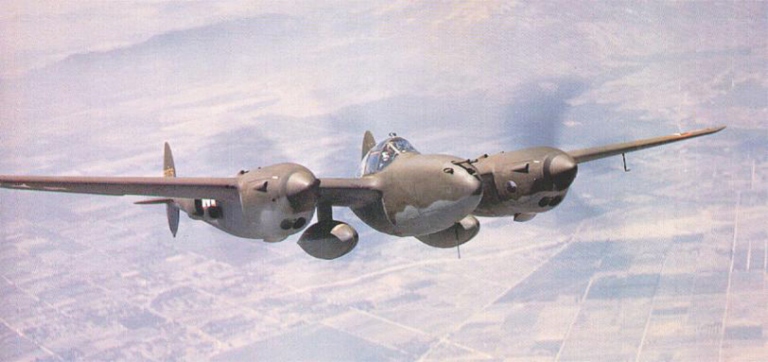 Factory image of a P-38H Lightning in 1943 (Lockheed).  With a large proportion of Pacific and Med P-38 operations flown at medium to low altitudes, Lockheed and Allison had little operational experience with the aircraft at high altitude and low ambients and this was quickly revealed. The Allisons misbehaved quite consistently, 'throwing rods, swallowing valves and fouling plugs' while the intercoolers often ruptured under sustained high boost, and turbocharger regulators froze at 10 in. or 80 in. of boost, the latter often resulting in catastrophic failures. Even with the arrival of the P-38J, engines and turbochargers continued to fail. The new intercooler/oil cooler design was actually too efficient and the enlarged radiators became a new problem. Fuel too, was a source of trouble, it is believed by many knowledgeable people that the majority of fuel used in Britain was improperly blended, the anti-knock lead compounds coming out of solution (separating) in the Allison's induction system at extreme low temperatures. This could lead to detonation and rapid engine failure, especially at the higher power settings demanded for combat. Many of the P-38's assigned to escort missions were forced to abort and return to base. Most of the aborts were related to engines coming apart in flight. The intercoolers that chilled the fuel/air mixture too much. Radiators that could lower engine temps below normal operating minimums. Oil coolers that could congeal the oil to sludge. These problems could have been fixed at the squadron level. Yet, they were not. It took the P-38J-25-LO and L model to eliminate these headaches. Add sub-standard fuel, green pilots, poor tactics and the 8th had a serious problem in the making. Having had their numbers seriously reduced by aborts, the remaining fighters were all the more hard pressed by vastly superior numbers of Luftwaffe fighters. The single inexperienced 55th FG often fought the JGs outnumbered 5:1, and the operational debut of the 20th FG in late December 1943, equipped with a mixed inventory of P-38H and P-38J-5/10-LO did not dramatically improve the situation. There is little wonder that loss rates were relatively high and the kill to loss ratio was below that of the P-47's which could be massed by the hundreds (700 P-47's flying escort was not uncommon). The Luftwaffe quickly learned to position the bulk of their fighters just beyond the range of the Thunderbolts and repeatedly flew aggressive small unit ambushes against the handful of P-38s tied to close escort and thus denied the freedom to engage at will. 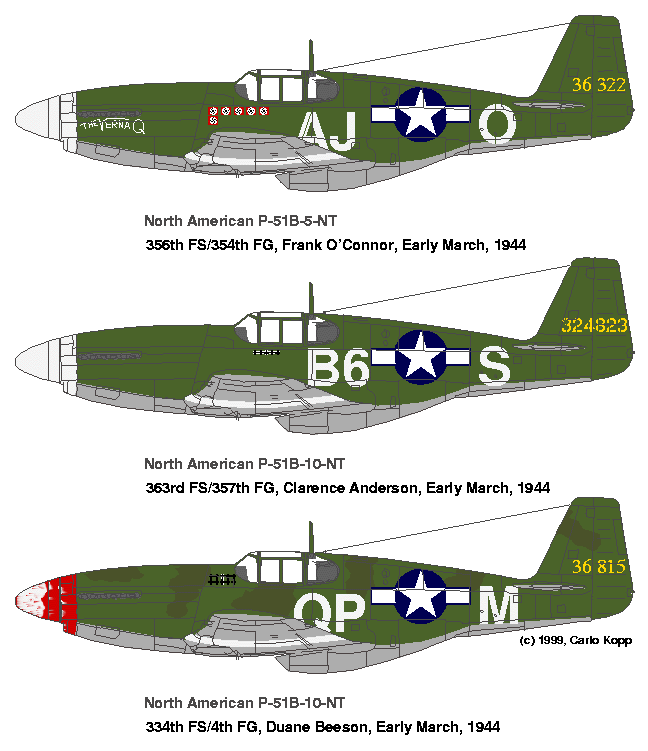 To aggravate these problems, inadequate cockpit heating resulted in severe pilot frostbite, while the Luftwaffe quickly learned about the compressibility problems in dives, with German pilots evading the P-38s by executing a split-S at high speed. The initial roll rate was not spectacular and the easily recognized planform provided the Luftwaffe with yet another advantage to play. Poor serviceability and engine problems meant that initially 50 or less aircraft were available for such missions, including the first escorts over Berlin, and therefore the 55th and later also 20th FG usually fought the JGs outnumbered between three to one and five to one, as noted previously. The large number of engine failures deep inside enemy airspace exacerbated the problem, and the aggregate exchange rate, accidents inclusive, dropped to about 1:1.5 in favour of the Lightning by 1944. Aircrew morale dropped, moreso due to the large number of single engine landing accidents, thus further damaging the aircraft's reputation. The technical problems were not resolved until the introduction of the P-38J-25-LO, by which time the 8th had decided that the new Merlin powered P-51B/C was a better choice for the mission. In hindsight, while the P-38H and early J variants may not have performed to expectations in the ETO, what is overlooked is that their presence alone allowed the daylight offensive to proceed at the most crucial phase of the battle, the last quarter of 1943, leading to eventual air superiority by the middle of 1944, when the P-51's reached full strength. It is safe to say that were larger numbers of the P-38 available to offset Luftwaffe numbers, and more experienced pilots made available to crew the P-38, the overall result would have looked far better. The common conclusion that the P-38 was inadequate for the needs of the 8th is frequently based upon comparisons of the scores achieved by the 20th and 55th FGs during the late February "Argument" raids, in comparison with the P-51B equipped 354th FG (9th AF) and the 357th FG (8th AF), and the scoring performance of the P-51B equipped 4th FG in the early March raids into Germany. The factor which is ignored by critics of the P-38 is tactical and aircraft/powerplant handling experience. The 4th FG comprised the former RAF Eagle Spitfire squadrons, and was by far the most experienced USAAF FG in the ETO. The 354th was being led by Blakeslee, formerly of the 4th FG. The 357th drew directly on the experience of the 4th and the 354th FGs. All three FGs drew on the initial long range escort experience of the 55th. 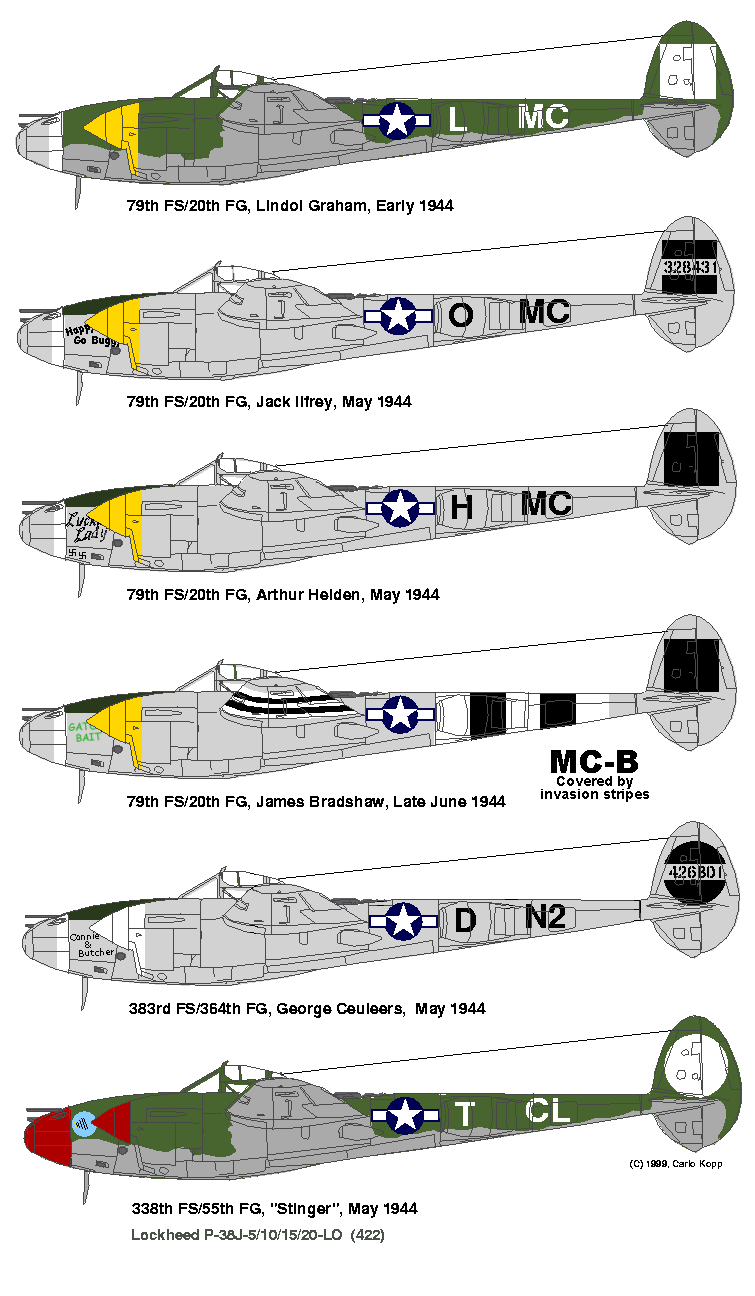    In summary a valuable pool of tactical experience and engine handling experience for the Merlin equipped P-51B existed in the 4th FG, and this experience could be directly applied to the P-51B. No such experience existed for the turbocharged Allison powered twin engined P-38 in theatre. The valuable tactical and handling experience of the SWPA FGs was a theatre away. Only a limited number of MTO pilots were made available for the 20th and 55th, and both units had taken heavy losses during the early escort missions, impacting both morale and the rate at which experience could be accumulated in these FGs. Many of the P-38 handling techniques developed in the SWPA to counter the highly manoeuvrable and skilled Japanese opposition, such as differential throttle and rudder assisted roll entries, were never practiced widely in the ETO. Despite these difficulties the 55th did well on a number of
sorties
during this period. On the 3rd November, 1943, the 55th in concert with
the experienced 4th, 56th and 78th FGs clashed with the elite JG 1. The
55th accounted for 7 Luftwaffe fighters of the 13 claimed. On the 25th
November, 1943, 4 FW-190s were claimed for the loss of one P-38H, one
of
the Focke-Wulfs belonging to Major J. Seifert (an "expert" with 57
kills),
Gruppenkommandeur of II/JG26. Other sorties were much less successful,
and heavy losses were suffered on a number of occasions. A heavy price
was exacted for the deployment of inexperienced pilots in a very
demanding
theatre in the hitherto untried long range escort mission profile. |
|
Lt Arthur W. Heiden and ground crew
photographed with his 20th FG P-38J in early 1944 (A.W. Heiden
collection). Perhaps the best critique of the ETO record of the P-38 is that by former 20th FG Capt. Arthur Heiden, who flew the P-38 during the Spring of 1944, in the company of better known pilots such as Jack Ilfrey, and Ernest Fiebelkorn, later instructed on the P-38 and P-51, and after the war went on to log in excess of 25,000 hrs of flying time: "The quality of multi-engine training during World War II bordered on the ridiculous. I am convinced that with training methods now in use we could take most of civilian private pilots who might be about to fly the Aztec or Cessna 310, and in ten hours, have a more confident pilot than the ones who flew off to war in the P-38. A P-38 pilot usually got his training in two ways. The first way, of course, was twin-engine advanced training in Curtiss AT-9s, which had the unhappy feature of having propellers you couldn't feather. After sixty hours of this, the student received ten hours of AT-6 gunnery, although he might get his gunnery training in the AT-9, since AT-6s were in short supply." "At this point he had his chance to fly the RP-322 for another twenty hours. The 322, as you know, was the British version of the airplane, and they came with assorted equipment and things on them that nobody could predict. Upon graduation from the RP-322 he was assigned to a P-38 Replacement Training Unit (RTU) or an Operational Training Unit (OTU) for 100 hours or more of fighter training. A second way to get into the P-38 was to transition from single engine fighters. In this event, someone probably took him up in a multi-engine transport or bomber and demonstrated engine shutdown a couple of times after skimming the tech order, a blindfold check, and then Ignoring the check list (not for real fighter pilots!), he blasted off. More than one neophyte has described his first "launch" in a P-38 as being hit in the ass with a snow shovel." "Either method of training, probably, made little difference as neither guy knew that much about multi-engine operations and procedures. True, he had been warned about the magic number of 120 miles per hour his Vme (editor:Vmca) or single-engine control speed. He had swam in glue during a couple of prop featherings while in formation with his instructor. He was, also, warned never to turn into a dead engine, never put down the gear until he had made the field, and never to go around with one caged. That was about it until shortly thereafter the old Allison time bomb blew up, and he was in business the hard way. Right on takeoff. "Some people lucked out if the runway was long enough. Some overshot or undershot and they bent the whole thing. Some tried a single-engine go-around anyway, usually with horrible results. Such happenings would make a son of a bitch out of any saint." "Tony Levier's spectacular demonstrations were an attempt to rectify all these problems, but the damage had been done. The Air Corps, as far as I knew, never did change its pilot training." "For perspective, it must also be remembered that two other significant events had taken place in training (in England). Theater indoctrination at Goxhill in England had received the same overhaul that had occurred in the States. The most important of all may have been the training units set up by the combat organizations themselves. Here it was possible to up-date training to the latest information and for individual commanders to put their special stamp on things and develop new tactics. "But and this is giant towering BUT this was all for the P-51 pilots." "What would have happened if the P-38 pilots and their
units could
have been blessed with the same wonderful opportunity?" For context, we present a previously unpublished letter from the Commanding Officer of the 20th Fighter Group, to the 8th Air Force Headquarters. The letter spells out the problems faced by the P-38 Groups in clear, unambiguous terms.
3 June 1944 Subject: P-38 Airplane in Combat. To: Commanding General, VIII Fighter Command, APO 637, U.S. Army. 1. The following observations are being put in writing by the undersigned at the request of the Commanding General, VII FC. They are intended purely as constructive criticism and are intended in any way to "low rate" our present equipment. 2. After flying the P-38 for a little over one hundred hours on combat missions it is my belief that the airplane, as it stands now, is too complicated for the 'average' pilot. I want to put strong emphasis on the word 'average, taking full consideration just how little combat training our pilots have before going on as operational status. 3. As a typical case to demonstrate my point, let us assume that we have a pilot fresh out of flying school with about a total of twenty-five hours in a P-38, starting out on a combat mission. He is on a deep ramrod, penetration and target support to maximum endurance. He is cruising along with his power set at maximum economy. He is pulling 31" Hg and 2100 RPM. He is auto lean and running on external tanks. His gun heater is off to relieve the load on his generator, which frequently gives out (under sustained heavy load). His sight is off to save burning out the bulb. His combat switch may or may not be on. Flying along in this condition, he suddenly gets "bounced", what to do flashes through his mind. He must turn, he must increase power and get rid of those external tanks and get on his main. So, he reaches down and turns two stiff, difficult gas switches {valves} to main - turns on his drop tank switches, presses his release button, puts the mixture to auto rich (two separate and clumsy operations), increases his RPM, increases his manifold pressure, turns on his gun heater switch (which he must feel for and cannot possibly see), turns on his combat switch and he is ready to fight. At this point, he has probably been shot down or he has done one of several things wrong. Most common error is to push the throttles wide open before increasing RPM. This causes detonation and subsequent engine failure. Or, he forgets to switch back to auto rich, and gets excessive cylinder head temperature with subsequent engine failure. 4. In my limited experience with a P-38 group, we have lost as least four (4) pilots, who when bounced, took no immediate evasive action. The logical assumption is that they were so busy in the cockpit, trying to get organized that they were shot down before they could get going. 5. The question that arises is, what are you going to do about it? It is standard procedure for the group leader to call, five minutes before R/V and tell all the pilots to "prepare for trouble". This is the signal for everyone to get into auto rich, turn drop tank switches on, gun heaters on, combat and sight switches on and to increase RPM and manifold pressure to maximum cruise. This procedure, however, does not help the pilot who is bounced on the way in and who is trying to conserve his gasoline and equipment for the escort job ahead. 6. What is the answer to these difficulties? During the past several weeks we have been visited at this station time and time again by Lockheed representatives, Allison representatives and high ranking Army personnel connected with these two companies. They all ask about our troubles and then proceed to tell us about the marvelous mechanisms that they have devised to overcome these troubles that the Air Force has turned down as "unnecessary". Chief among these is a unit power control, incorporating an automatic manifold pressure regulator, which will control power, RPM and mixture by use of a single lever. It is obvious that there is a crying need for a device like that in combat. 7. It is easy to understand why test pilots, who have never been in combat, cannot readily appreciate what each split second means when a "bounce" occurs. Every last motion when you get bounced is just another nail in your coffin. Any device which would eliminate any of the enumerated above, are obviously very necessary to make the P-38 a really effective combat airplane. 8. It is also felt that that much could done to simplify the gas switching system in this airplane. The switches {valve selector handles} are all in awkward positions and extremely hard to turn. The toggle switches for outboard tanks are almost impossible to operate with gloves on. 9. My personal feeling about this airplane is that it is a fine piece of equipment, and if properly handled, takes a back seat for nothing that the enemy can produce. But it does need simplifying to bring it within the capabilities of the 'average' pilot. I believe that pilots like Colonel Ben Kelsey and Colonel Cass Huff are among the finest pilots in the world today. But I also believe that it is difficult for men like them to place their thinking and ability on the level of a youngster with a bare 25 hours in the airplane, going into his first combat. That is the sort of thinking that will have to be done, in my opinion, to make the P-38 a first-class all around fighting airplane. HAROLD J. RAU Captain Stan Richardson of the 55th Fighter Group recalls some of his experiences as an instructor (before his tour with the 55th) at a stateside RTU. The airplane was a "dream" on single-engine. While I was instructing in P-38's at Muroc AAF, on occasion the instructor and three students (four ship flight) would each feather the right propeller (remember, only a single generator, and that on the left engine) for a "tail chase" which included loops, slow and barrel rolls, and just generally having a good time. The exercise was to instill confidence in the pilots ability to control the aircraft on one engine. My area of "expertise" while instructing at Muroc was single-engine demo's in a piggyback P-38. Take-off on two engines, feather the right engine shortly after take-off. Climb to 10,000'. Demonstrate various emergency procedures (landing gear and flap extension), propeller operation in fixed pitch (simulating electrical failure), high speed stalls, a loop, a roll or two, then return to the airfield for landing on one engine. Make a typical fighter approach on the deck, pitch out, drop the landing gear, then some flaps, finally full flaps and plunk it onto the runway. For a short period in my life flying P-38's I had as much time on one engine as I did on two. Keep in mind that most of my P-38 flying occurred just after my 20th birthday. Some of my P-38 combat time was while I was a 20 year old snot-nosed kid. No brains, lotsa luck. Gad! I love that bird..... It was a dandy flying machine in instrument conditions associated with poor weather. I had to return once from Berlin on one engine. No problem." Capt. Heiden went on to discuss some of the problems inherent with high altitude escort missions over Europe. He points out that all the combat instructors who gained their experience in Africa or in the Pacific, had done the vast majority of their combat flying below 20,000 feet. Therefore, new pilots were trained to fly the P-38 at altitudes below that height. Very few pilots had flown the Lightning at the altitudes required by 8th Air Force mission profiles and were loath to do so. Many of the P-38 trained pilots arriving in Britain requested assignment to the 9th Air Force in order to fly at lower levels where they had both experience and confidence in the ability of the airplane to do the job. Nonetheless, the high priority given to providing escort fighters determined that nearly all the incoming pilots were destined for the 8th. Most P-38 pilots were completely unprepared for high altitude operations nor the technical problems involved. Capt. Heiden continues: "These new pilots made their attempts to go to altitude. This is what the curriculum called for and they gave it their best, but those early airplanes, the way they were set up, just wouldn't make it. There were disastrous incidents of ignition breakdown because of high-tension leakage. The oxygen systems were woefully inadequate. This is what they put into the airplane and the pilot in the cockpit was stuck with he had. It just wouldn't do the job. No one liked 30,000 feet anyway. There had been no training for it. There had never been any need for it. It was too cold and the windows frosted up." "All this piled up on the 8th Air Force pilots, but there they were at 30,000 feet plus and sixty below zero. It was miserable." "Then things really started to come apart. Now, suddenly, turbochargers were running away. They were blowing up engines on the basis of one engine blow up every seven hours. Intercoolers were separating the lead from the fuel and the result was lowered octane. Hands and feet were freezing; pilots were calling their airplanes airborne ice wagons and they were right. Frost on the windows got thicker than ever. Most disgusting of all was the leisurely way the German fighters made their get-aways straight down." "Another problem seldom mentioned was the single generator problem. If a generator was lost or a low battery the Curtis Electric prop would lose the Dynamic Brake and go to extreme Low Pitch. This was called a RUN AWAY. It could happen on Take Off with a low battery. Since you couldn't feather it set up a lot of drag making it difficult to make it around to land. The Killer situation was to lose the Generator or lose the engine with the Generator on it while 2 or 3hrs into Germany. Procedure was to SET the Props then turn off all electrical power. Then momentarily turn it back on to reset the props as needed. Being sure everything electrical was also turned off -- No Radios. The forgotten thing was you were at altitude and the OAT was -60degrees and the little old battery was cold soaked. Hence, dead as a dog. Result, with a lot of altitude you have less than an hour with one or two props in RUNAWAY. I have no statistics to back me up on this, but believe, that more P-38s were lost from this than any other factor including combat. This simple problem did not receive attention until April, '44." "This leads us to another vague fact. This is the need of boost pumps to maintain fuel pressure to the engines at around 20,000' and above. No boost pumps, a pilot will need to get down to 20K or below, and if he needs more than cruise power he will have to get way down low." "My only experience in these problems, was of course the
runaway prop, and once when the boost pump circuit breakers popped
while we were engaged with some 109s. So there I was holding in the
circuit breakers with my right hand while flying with my left, hoping
to get to a lower altitude before something burned up." 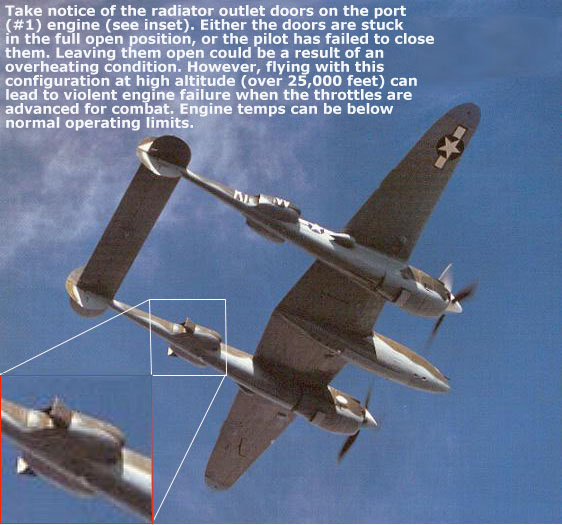 Original photo via W.M. Bodie "P-38 units from the moment of going on initial operational status were committed to MAX EFFORT. No two ways about it. No time to shake things out, to discover your problems. You got there and zap, you were in up to your eyeballs. This meant that everything flyable went and everything that still had wings would be made flyable. No matter what. This in effect was the same as demanding, by direct order, that everyone and everything must have, immediately if not sooner, 100 percent combat capabilities. Like Casey Jones, the pressure was all the way up without any margins whatsoever." "Despite these revolting developments, the pilots of the 8th knew that the P-38 could outturn, outclimb, outrun and outfight anybody's airplane in the air so they set about rectifying their problems." "Every one of these problems was solved with the introduction of the P-38L." "Let me repeat this again and again. It can never be emphasized too strongly. It makes up the Gospel Word. The P-38L. Now there was the airplane." "Nothing, to these pilots, after the hard winter of 1943-44 could be more beautiful than a P-38L outrolling and tailgating a German fighter straight down, following a spin or split-S or whatever gyration a startled, panicked and doomed German might attempt to initiate. You just couldn't get away from the P-38L. Whatever the German could do, the American in the P-38L could do better." (cited from [8] with permission from Arthur W. Heiden). Captain Stan Richardson comments on the slow initial roll rate of the early P-38H and J models deployed with the 8th Air Force. "The P-38 was a large fighter with much mass. 52' wingspan and long, wide-chord ailerons contributed to slow response along the longitudinal axis of the early airplanes. The higher the indicated airspeed, the slower the response. At very high IAS it took plenty of muscle to roll the airplane. I don't believe that a joystick would have improved matters over the wheel. The Luftwaffe soon recognized the slow roll rate of the "H" and early "J" model Lightnings and used it to their advantage. It also learned of the dive restrictions caused by "compressibility" and used that advantage also. Sometime in the development of the P-38, the design engineers must have realized that P-38's didn't have great roll capability. When Tony Levier, Lockheed test pilot, visited the 55th FG, he heard a common thread of complaints from the pilots. Cold cockpit, poor "flick" roll rate, and inability to dive after the Bf-109's and FW-190's from high altitude. The complaints were relayed to the Lockheed factory, and design changes were incorporated in the P-38L. Prior to the arrival of the "L's" at Wormingford, many modification kits were shipped to Langford Lodge, North Ireland, for field modifications of the "J" model Lightning then arriving in the theater. Unfortunately, an early shipment aboard a DC-4 was lost at sea when the Brits shot the cargo plane from the sky. It took several months to replace the lost modification kits. Early P-38J-5-LO's were modified at Langford Lodge by the addition of the replacement kits. The kits added dive recovery flaps under the wings, outboard of the engines, and a 3000psi hydraulically boosted aileron system. The P-38L's were now coming down the production line with the aileron boost and "speed boards" installed. P-38's from the J-25's onward were what we should have had when we went operational in October 1943. The compressibility problem of the P-38 was also experienced by P-47 Thunderbolts, and was not a mystery to aeronautical design engineers. The P-38J25-LO and P-38L's were terrific. Roll Rate? Ha! Nothing would roll faster. The dive recovery flaps ameliorated the "compressibility" (Mach limitation) of earlier Lightnings. An added benefit of the dive recovery flaps was their ability to pitch the nose 10-20 degrees "up" momentarily when trying to out turn the Luftwaffe's best, even when using the flap combat position on the selector. Of course the nose "pitch-up" resulted in increased aerodynamic drag, and must be used cautiously. High speed is generally preferred over low speed in combat situations. Properly flown, the Fowler flaps of the P-38 allowed very tight turning radius." Arthur Heiden observed first-hand how tight a well flown P-38 could turn. "I remember an amusing incident, Apr '44. We had run into a real mess and the Luftwafe was bouncing everybody. My flight had just been bounced, did the break, and the Luftwaffe kept on going. While I was on guard, I saw this other flight get bounced. While the rest of that flight did a halfhearted break, old tail-end Charlie's P-38 emitted a cloud of exhaust smoke (thought he had been hit), saw his nose come up and wrap up his turn. Before I could think, old #4 was in the lead of that flight. Impressed the hell out of me. Turned out to have been Fiebelkorn -- he was off to a good start." The decision to replace the P-38J in the 8th AF with the P-51, rather than the P-38L, meant that the 8th never got to exploit the full performance and combat potential of the P-38. Capt. Heiden makes some further interesting observations. "The P-51 was a new airplane and we were eager to fly it and were happy with it. It was so easy and comfortable to fly. The P-38 had kept us on our toes and constantly busy--far more critical to fly. You never could relax with it. We were disappointed with the 51's rate of climb and concerned with the reverse stick, especially if fuel was in the fuselage tank, the rash of rough engines from fouled plugs, and cracked heads which dumped the coolant. With the 38 you could be at altitude before landfall over the continent, but with the 51 you still had a lot of climbing yet to do. The 38 was an interceptor and if both engines (were healthy), you could outclimb any other airplane, and that's what wins dog fights. When you are in a dog fight below tree tops, it is way more comfortable in a 38 with its power and stall characteristics and, for that matter at any altitude." To summarise the performance of the P-38 in the 8th AF, Capt Heiden notes: "Aug 43, 8thAF has retrieved some Bomber Gps and has several original Spitfire/P-47 FGs. Two P-38 FGs, 1-P-51 FG that will not be operational till late Oct and have to workout tactics and maintenance problems, which all are severe. Highly inadequate supply of A/C." "Nov. 43, P-38Hs and P-51Bs beginning ops, find themselves in a climate environment none had experienced before and a superior opponent with 10 times the numbers. Forced to take the bombers to, over and withdraw them. Lucky to get half of what they had to the target after aborts/early returns. Sometimes as few as four fighters made it to target under attack continuously going and coming. Five minutes of METO power was planned into the profile. Meaning that if you fought over five minutes you wouldn't make it home. Remember, you were being bounced continuously." "Feb 11, 44, 357thFG goes on Ops (P-51). 4thFG converts to P-51s. 2-weeks later and other groups are converting by end of Feb. Now fighter groups don't have to go the whole to, over, and from target. The escort is now Penetration, Target, and Withdrawal, each leg is assigned to only one FG. and many operational problems are being resolved. Internal fuel on P-38s has been greatly increased with Wing and Leading edge tanks. P-47s are starting to get external fuel tanks." "The last half of 43 brought horrendous losses, had forced German manufacturing underground and had forced Germany to go to synthetic oil. This had increased the cost of war exponentially to the Germans." "Feb 44 we went back to Schwienfurt with acceptable loses. March 3rd the 20th & 55thFGs went to Berlin--Bombers were recalled. March, April, and May brought vicious battles, often with heavy loses. However, Germany were throwing their valuable flight instructors and 100hr students in to the battle. The Luftwaffe was at last starting to die." "The 8th was, at last, being flooded with Mustangs and well trained pilots. The Mustang was a delight to fly, easier to maintain cheaper to build and train pilots for, and had long legs. In those respects you can rightfully call it better, but it could not do anything better than a P-38J-25 or L. Just remember who took the war to the enemy and held on under inconceivable odds. Enough of the crap."
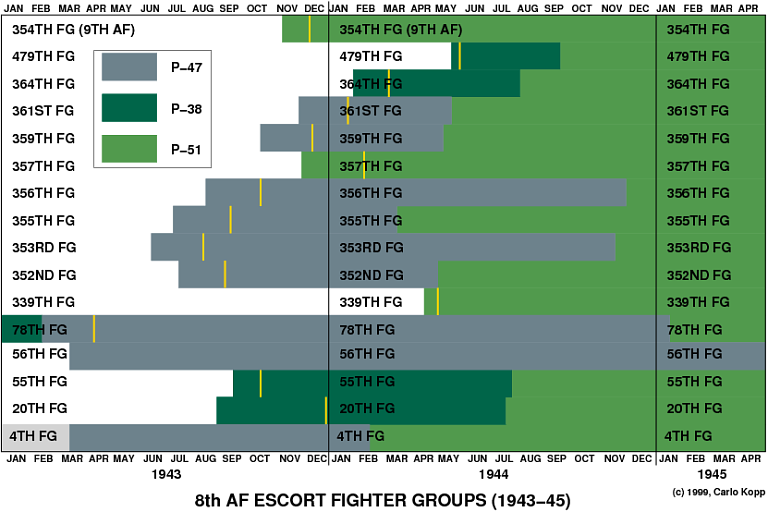 |
The Best of the
Breed - the P-38J and L
|
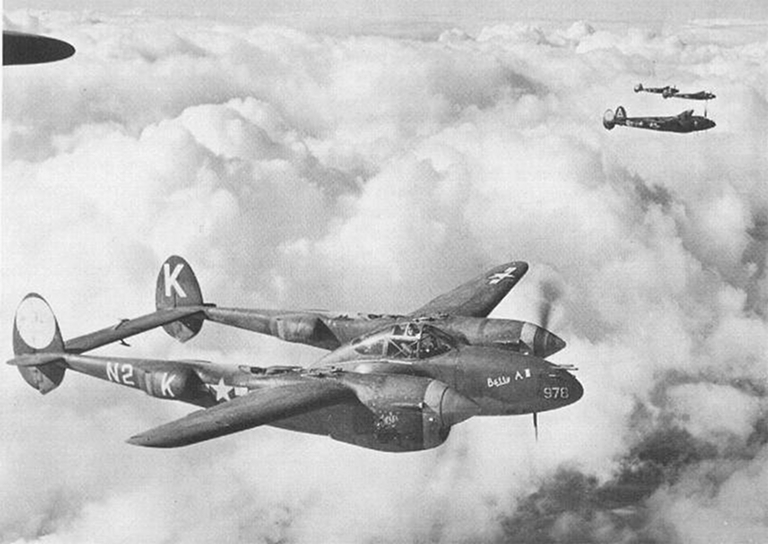 George Ceuleers collection Deliveries of the P-38J commenced in August, 1943, however, the P-38J-25 did not arrive until July of 1944. Too late to affect 8th Air Force thinking as the die had been cast in the ETO and the 8th began to phase in the P-51B and C from early 1944. The P-38s were gradually shifted to the ground attack and Flak suppression roles, where their superior payload radius performance easily outclassed the single engined types. The result was an aircraft which could well exceed the Luftwaffe fighters in performance, while further extending the type's radius performance. Almost 3,000 were built and deployed to every theater, with increasing numbers to the MTO with the 15th AF, the Pacific with the 5th, 7th, 11th and 13th AF's, and Burma/India with the 10th and 14th AF's. In the Pacific, the 5th and 13th AF's used the P-38J to its fullest. The invasion of the Philippines saw redeployment from New Guinea to the Philippines, and the 475th FG, Satan's Angels, with four squadrons of P-38s led the scoring contest, well ahead of the mixed FG's. The 475th was a late entry, formed at Ipswich in mid 1943 with a mixed force of G/H models. Many aces flew with the Fifth Air Force, and the two highest scoring US pilots of the war, Richard Bong (40) and Tommy McGuire (38), both flew the P-38, Bong with the 49th Fighter Group and McGuire with the 475th. By the end of the war, the 475th had destroyed 551 for 56 losses, a ratio of 10:1. The 49th, having flown mostly P-40s and P-38s, with some P-47Ds thrown in for good measure, out scored the 475th with 668 air to air victories. This score ranked them third of all American Fighter Groups behind the the 354th and 56th in the ETO. A much publicized event in the Pacific was the 1944 visit by Charles Lindbergh, who widely disseminated the knowledge of range performance improvement through optimal cruise control technique (discussed above), getting the message to pilots and unit commanders throughout the theater.(4) In the Med, the P-38Js flew from Italy on escort and fighter sweep missions into Southern and Central Europe, attacking targets as far North as Vienna and Prague, and repeatedly raiding the Rumanian oilfields at Ploesti. The Ploesti oilfields were the target of many a B-24 raid, with questionable results, P-38 strikes however reduced production to a fraction of full capacity. The P-38s became a familiar sight all over Europe, strafing railway locomotives and Flak sites in areas once the inviolate domain of the Luftwaffe. With ability to carry two 2,000 lb bombs to substantial radii the P-38 became a major battlefield interdiction asset, playing a key role in the 1944 invasion. The P-38J was followed by the P-38L, deliveries of which commenced in June, 1944, almost 4,000 were built by the end of hostilities. The P-38L was fitted with F-30 engines, delivering equal or better power to higher altitudes, and slightly larger fuel tanks, with booster pumps in the wings. Detail changes included the first tail warning radar in a fighter. By the end of 1944, the role of the P-38, like that of most Allied fighters, had shifted to tactical ground support largely due to the absence of serious fighter opposition. As the Third Reich crumbled and the Japanese retreated into their final defensive perimeter, the operational career of the P-38 reached its final stage. Expensive to maintain and fly, most P-38s were phased out soon
after
the end of hostilities in the Pacific, the F-51 Mustang assuming its
role.
It is interesting to note that the haste with which the aircraft were
disposed
of prevented their use in the subsequent Korean war, an environment
where
the P-38 would doubtless have thrived in its tactical interdiction
role,
with better payload/radius, firepower and resilience to ground fire
than
the F-51. The last operational P-38s remained in service with several
US
aligned Third World countries, but spares availability and operating
costs
soon led to their demise. Today only a small handful of aircraft
remain,
with even fewer flyable. |
Derivatives - the F-4, F-5, Droop Snoot, Pathfinder, P-38K and P-38M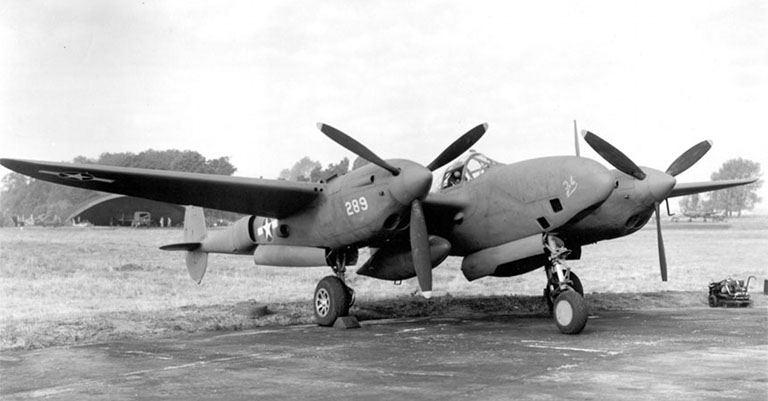 Early production F-4A-1-LO
photoreconnaissance variant (U.S. Air Force image).
The F-4 and F-5 photorecce derivatives of the P-38 were without doubt the most important reconnaissance aircraft in the USAAF inventory. After the difficulties the USAAF encountered with its prewar A-20 derivative F-3 recce platform, Lockheed exploited the opportunity with a proposal for a P-38E fitted with four K-17 cameras in a customised nose. In late 1941 the 116th production P-38E was converted to the new F-4 photorecce configuration, soon followed by new build F-4-1-LOs, which numbered one hundred. These were subsequently followed by twenty F- 4A-1-LOs which were essentially P-38E airframes built concurrently with the P-38F. The speed and range of the F-4 guaranteed success and set the trend, with the later P-38G metamorphosising into the F-5A, of which no less than 60 were built. Later photorecce subtypes were created by conversion from fighter airframes rather than new build. The P-38J was the last subtype to provide for new built
photorecce airframes,
with 200 built as F-5B-1 models, followed by 123 F-5C-1 and an
undisclosed
number of F-5E-2 and F-5F conversions. The subsequent P-38L was only
ever
modified for this role, with 705 rebuilt to E-3 configuration and many
more to other subtypes, including the F-5G with the bulbous nose
configuration.
Late production F-5B-1 aircraft in faded and new Haze Blue PR camouflage (U.S. Air Force image).
Late production F-5B-1 aircraft over France in June, 1944 (U.S. Air Force image). Another important variant of the P-38 was the Droop Snoot. The
P-38
could carry up to two 2,000 lb bombs, or at more useful radii, one bomb
and a 300 USG tank. This payload/radius capacity begged to be exploited
and in mid-1943, USAAF Colonels Hough and Ostrander, capitalizing on
the
pressure created by heavy losses in the B-17 and B-24 force, proposed
the
use of the P-38 as a level formation bomber, led by two-seat
pathfinding
P-38s with bomb sights. By late February, 1944, Lockheed's facility at
Langford Lodge in the UK rebuilt several P-38Js to the proposed
configuration.
This involved removing the armament, installing a transparent perspex
nose
with an optical flat panel, fitting a Norden gyro stabilised bombsight
and adding lead ballast and armor plate about the bombardier's station.
At least one aircraft is known to have had a flexibly mounted .50 cal
gun
in the perspex nose, a field retrofit.
The Droop Snoots proved most successful, with over one hundred
aircraft
rebuilt, but the concept was in practice limited to tactical
operations,
largely due to the opposition of the heavy bomber commanders who
rejected
the idea. Droop Snoots were used extensively in the ETO, MTO and India,
and when not providing bomb aiming were used as a navigational lead
aircraft.
A derivative of the Droop Snoot concept, in turn, the radar equipped
P-38J
and L Pathfinders were rebuilds from standard J/L-models. These
aircraft
had a dielectric nose cone covering an AN/APS-15 navigation/attack
radar,
with the operator hidden in the forward fuselage compartment. No
records
exist on the number built, these aircraft were employed to lead P-38
level
bombing formations under non-visual conditions, eg bombing through an
undercast.
A formation of ETO P-38J fighters in
June 1944 (U.S. Air Force). The obscure P-38K was a one-off prototype of an optimized high
altitude
subtype, intended to resolve the problems found in the ETO with the
P-38G/H
models. Fitted with F-15 engines, chin intercoolers not unlike the
later
P-38J, and Hamilton Standard Hydromatic propellers optimized for high
altitude
performance, the P-38K-1-LO would outclimb (4,800 fpm @ SL), outrun
(375
kt @ Alt) and out accelerate the P-38J at altitude. The pressure to
maintain
production rates spelled doom for the P-38K, as the US Government was
not
(ostensibly) prepared to accept a reduction in volume resulting from
the
retooling required to accommodate the bigger props. In any event, the
P-38J
had resolved most of the powerplant related failings of the G/H series
and was considered adequate to the task.
P-38M-6-LO (U.S. Air Force). Somewhat more successful, but equally obscure was the P-38M, a
dedicated
night fighter derivative of the P-38L. The P-38M Night Lightnings were
a factory design which followed a number of successful field
conversions
in New Guinea and Guadalcanal, where P-38Fs were fitted with SCR-540 or
APS-4 search radar. The P-38L to M rebuilds involved fitting a cramped
'piggyback' radar operator's station aft of the cockpit, under a bubble
canopy, and mounting an AN/APS-4 air intercept radar in a cylindrical
pod
under the nose, the mounting derived from the standard wing pylon.
Seventy
five P-38L-5-LOs were rebuilt to glossy black P-38M-6-LOs in late 1944,
and deployed to the Pacific theater in 1945, too late to score any
kills. |
The P-38L-5/10-LO - A Technical PerspectiveThe P-38L will appear quaint to those familiar with modern combat fighter design, but includes many modern design features and was as densely packed as any contemporary tactical fighter. A measure of how well Lockheed engineers designed the aircraft is the fact that the airframe experienced only detail changes throughout its production history, that being the longest of any of the US wartime fighters. The principal structural elements of the P-38 were the wing and the tail booms, the latter housing engines, turbochargers and associated systems. The wing structure was of a cantilever type, comprising a center section assembly, outer sections and wingtips. The wing employed a single main spar at about 35% chord, with an auxiliary rear spar and a forward spar in the center section. Torsion boxes were formed by skinning the wing with panels which were corrugated span-wise on the inner surface, in the center section these panels had an additional internal smooth skin to form true sandwich skins, which enclosed the main fuel tanks. The Fowler flaps were structurally attached to the rear spar. The wing leading edges formed a stiffened structure, which contained 62 USG (5) integral fuel cells. The 90 USG main tanks were aft of the center section main spar, with the cavity between the main and forward spars filled with the 60 USG reserve tanks. Wet pylons provided for additional 165 or 300/310 USG drop tanks. While each engine had a separate fuel system, tanks could cross feed the engines with the exception of the reserve tanks. The wing structurally supported the central nacelle and forward boom structure. The forward nacelle carried the nose wheel, guns and magazines, and the cockpit. The pilot was seated fore of the main spar, with a canopy built up from forward and aft sections, with a jettisonable top cover and downward cranked side windows. The windshield was a single slab of armor glass, with a single forward armor steel plate and multiple rear plates to provide comprehensive fore and aft aspect armor coverage. The tail boom turbochargers were contained in an armor ring to shield the pilot from disintegrating turbines. The nose wheel retracted under the cockpit, with an entry ladder hinged at the end of the nacelle. Avionic fit typically comprised an SCR-522A transceiver, an SCR-274N or BC1206 ranging receiver, an SCR-695A IFF transponder and an APS-13 tail warning radar, fitted to the left aft boom. F-5 photo-recce aircraft often carried a DF receiver with a loop antenna under the forward nose. Control was via a yoke on an inverted L shaped boom, with radio and gun buttons on the yoke, yoke aileron inputs were augmented by a hydraulic booster system. Engine controls were to the left of the cockpit, with pitch/RPM and throttles clustered, and a separate mixture control group forward of the throttles. The elevator trim wheel was below the throttles. Primary flight instruments occupied the left half of the panel, with engine instruments to the right, using dual indicator dials. The gun fit comprised a centrally mounted AN-M2C 20 mm cannon with up to 150 rpg, about which were clustered four MG-53-2 .50 cal (12.7 mm) machine guns with up to 500 rpg. Bombs of up to 2,000 lb weight were carried on the centresection pylons, and tree launchers for ten 4.5 in. rockets were optionally fitted to the outboard wing. The low pressure oxygen system employed an A-12 demand regulator, fed from two F-1 bottles in the left aft boom and a single bottle in the right boom. Pressure drop below 100 psi was typically signalled with a cockpit lamp. The aft boom mounted the coolant radiators and the detachable tail assembly, the forward boom housing the rearward retracting mainwheels under the turbochargers. The two Allison V-1710F-30 V-12s had a 5.5 in. bore and 6.0 in stroke, providing a compression ratio of 6.5. These drove Curtiss Electric constant speed props via a 2:1 reduction gear, delivering 1,475 HP military and takeoff ratings at 3,000 RPM, or 1,612 HP maximum rating at 3,000 RPM and 60 in. of manifold pressure. Some later engines are described as delivering up to 1,725 HP WEP rating. The engines required 100 octane or higher rated fuel, and had 13 USG oil capacity. The oil was cooled in two outboard chin core radiators, vented via automatically controlled flaps on either side of the nacelle. Fuel consumption was 0.65 lb/HP./hr at 1,100 HP normal rating, at 2,600 RPM. The B-33 turbochargers drew air from outboard scoops on the booms, feeding central chin core intercoolers with automatic temperature control, which in turn fed the carbs. The B-33 was redlined at 26,400 RPM and exhausted upward, ejector hoods were not used due the device's intolerance of any significant backpressure. 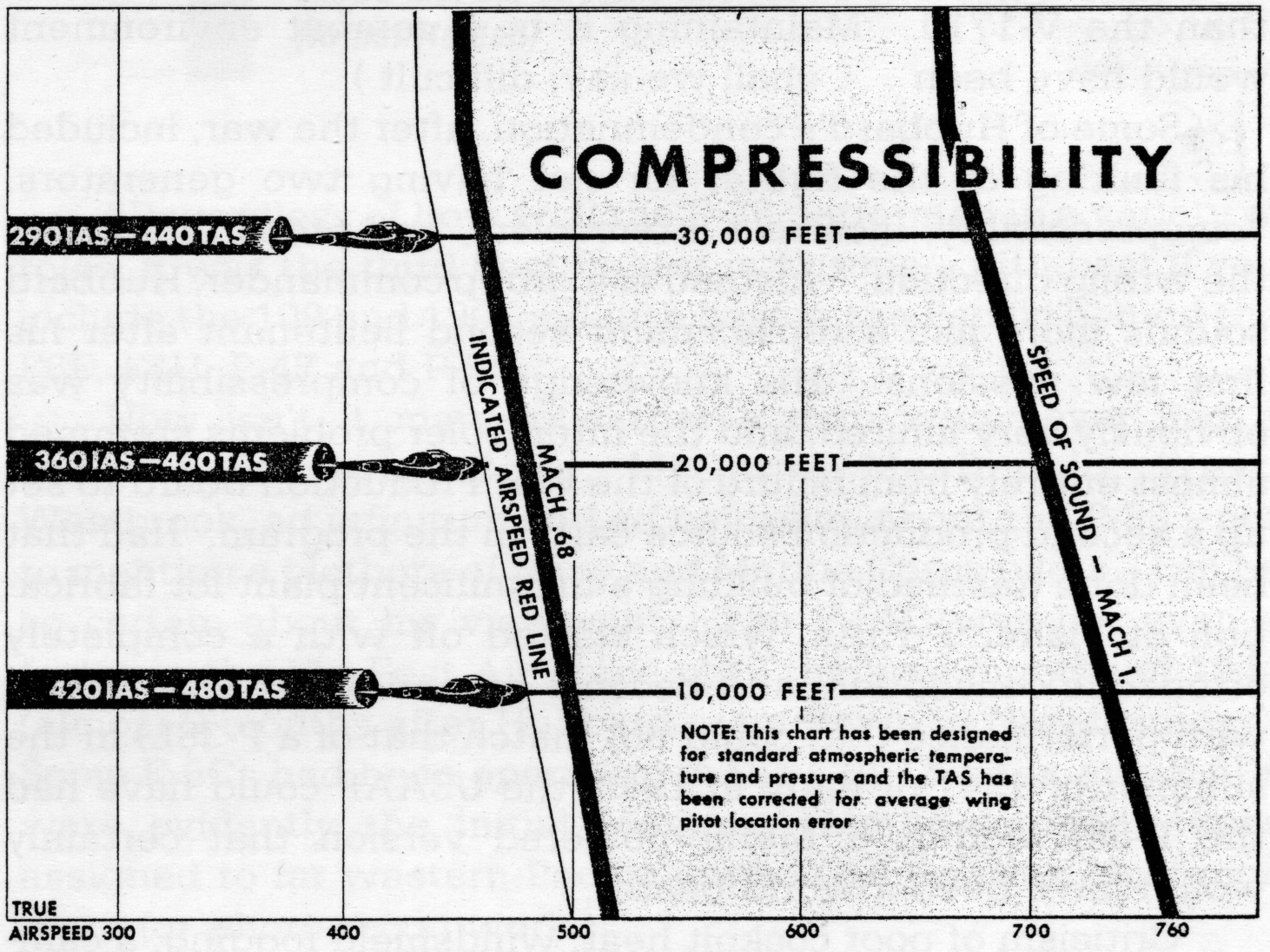
|
The Strategic Perspective
P-38F-1-LO Lightning Glacier Girl 94th
FS/14th FG formating with a P-51B and A-10A Thunderbolt in 2004
(U.S.Air Force image). All other parameters being equal, it was the radius of the Lightning which allowed the ETO daylight bombing offensive to succeed at a time when losses were high and long term success questionable. By the time Mustang numbers built up in the ETO, the Luftwaffe had already crossed the knee in the Lanchesterian attrition war curve and defeat was inevitable. While the much admired P-51 made a critical contribution, it is worth noting that cumulative deployments of the Merlin powered P-51 matched the P-38 only as late as the end of 1944, which is clearly at odds with the established mythology. With the 8th AF, the long range escort load was shared equally by the P-38 and P-51 throughout the decisive first half of 1944. In the Pacific, where land based air grappled with the Japanese, the Lightning was the foremost fighter, destroying more Japanese aircraft than any other Allied fighter. The air battles over New Guinea, the Solomons, the invasion of the Phillipines and later Okinawa were all campaigns where the radius and performance of the P-38 were fundamental advantages over Japanese air assets. The perception of the P-38 as a mediocre aircraft is clearly
the
result of wartime propaganda run unchecked, and lay interpretations of
period statements. The historical record clearly indicates that the big
twin was there when it really mattered and there can be no greater a
compliment
for its designers. It was the aircraft which allowed the USAAF to play
an offensive strategy almost from the very beginning of combat
operations. The P-38 was without doubt the strategically most important
American
fighter of World War II. |
 Above: P-38J-20-LO
in
formation
with F-15E; Below: in
formation with F-15E Strike Eagle, F-86E Sabre and F-22A Raptor
(U.S. Air Force images).
 |
Notes
2) Mitchel Field was (is) not far from Roosevelt Field where Lindbergh began his epic solo flight to Paris in 1927. Today Mitchel Field is occupied by the Cradle of Aviation museum and Nassau Colliseum, the home of the New York Islanders ice hockey team. Roosevelt field is now an extensive indoor shopping mall. 3) It is now generally accepted that it was Rex Barber who shot down Yamamoto. 4) There has been much written on Charles Lindbergh's contribution to increasing the range of the P-38. Much of this falsely states why he went to the SWPA. Lindbergh's purpose in the SWPA was not originally to instruct P-38 pilots in fuel conservation methods. He arrived in the area as a consultant for United Aircraft. He visited the 5th Air Force Headquarters and managed to convince the brass to allow him to observe P-38 combat operations. He soon discovered that the pilots were not being efficient with fuel. The P-38 manual called for cruise settings of 2,200 - 2,400 rpm in auto-rich. Lindbergh lectured on using 1,600 rpm in auto-lean. 5) Some sources list the leading edge tanks as having a
55
gallon capacity.
It is possible that both capacities may have been installed during the
production run. It is known that some early model P-38J aircraft were
retrofitted
with leading edge tanks, not standard on very early build aircraft. AcknowledgmentsSpecial thanks to Warren Bodie, Keith Meggs, Dave Prossor and Lockheed Corporation for their assistance in the preparation of this article. In addition, special thanks is in order to Warren Bodie for the use of his photographs and his insightful discussions with the editor. The author and editor would like to thank Capt. Arthur Heiden, USAF (ret) for his insightful and generous commentary on ETO P-38 and P-51 fighter issues through email correspondence with the author and editor in late 1998 and early 1999. We also want to express our deepest thanks to Captain Stan Richardson Jr. for his ongoing commentary on the P-38 and his experiences flying in combat and as a P-38 Instructor. Without the pilots of the P-38, this story could never be fully told. This web document is an amended and greatly expanded version of a two part series published in Australian Aviation, in 1992. It has been updated with a new layout in 2010 and published in the APA Technical Report Series, as a result of the original website going offline. References
[2] 'Pilot's Flight Operating Instructions for P-38H Series, P-38J Series, P-38L-1, L-5 and F-5B', AN 01-75-1, January 10, 1945 [3] Bodie W.M. 'The Lockheed P-38 Lightning', Widewing Publications, 1991 [4] Shennan A. 'Lockheed P-38 Lightning - A History', Historian Publishers, 1970 [5] McAuley L. 'Battle of the Bismark Sea', St. Martin's Press, 1991. [6] Middlebrook M. 'The Schweinfurt-Regensburg Mission', Allen Lane, 1983. [7] Green W. 'War Planes of the Second World War, Fighters, IV', Macdonald & Co, 1962. [8] Caidin M., 'Fork-Tailed Devil: The P-38", Bantam, 1990. [9] Stanaway J. 'P-38 Lightning Aces of the MTO/ETO", Osprey, 1998. [10] Kinzey B. 'P-51 Mustang, Part 1', Squadron Signal, 1996. [11] Stafford G.B., Hess W.N. 'Aces of the Eighth', Squadron Signal, 1973. [12] Glines G.V. 'Attack on
Yamamoto',
Schiffer Military History, 1993. |
 |
|
Technical Report APA-TR-2010-1201 |
|
|||||||||||||
![Sukhoi PAK-FA and Flanker Index Page [Click for more ...]](APA/flanker.png) |
![F-35 Joint Strike Fighter Index Page [Click for more ...]](APA/jsf.png) |
![Weapons Technology Index Page [Click for more ...]](APA/weps.png) |
![News and Media Related Material Index Page [Click for more ...]](APA/media.png) |
||||||||||
![Surface to Air Missile Systems / Integrated Air Defence Systems Index Page [Click for more ...]](APA/sams-iads.png) |
![Ballistic Missiles and Missile Defence Page [Click for more ...]](APA/msls-bmd.png) |
![Air Power and National Military Strategy Index Page [Click for more ...]](APA/strategy.png) |
![Military Aviation Historical Topics Index Page [Click for more ...]](APA/history.png)
|
![Information Warfare / Operations and Electronic Warfare Index Page [Click for more ...]](APA/iw.png) |
![Systems and Basic Technology Index Page [Click for more ...]](APA/technology.png) |
![Related Links Index Page [Click for more ...]](APA/links.png) |
|||||||
![Homepage of Australia's First Online Journal Covering Air Power Issues (ISSN 1832-2433) [Click for more ...]](APA/apa-analyses.png) |
|||||||||||||
| Artwork, graphic design, layout and text © 2004 - 2014 Carlo Kopp; Text © 2004 - 2014 Peter Goon; All rights reserved. Recommended browsers. Contact webmaster. Site navigation hints. Current hot topics. | |||||||||||||
|
Site Update
Status:
$Revision: 1.753 $
Site History: Notices
and
Updates / NLA Pandora Archive
|
|||||||||||||
|
|
Tweet | Follow @APA_Updates | |||||||||||
|
|
|||||||||||||
|
|
|||||||||||||
![F-111 Aardvark Index Page [Click for more ...]](APA/f-111.png)
![F/A-18 Hornet and Super Hornet Index Page [Click for more ...]](APA/fa-18a.png)
![Aerial Refuelling and Airlift Capabilities Index Page [Click for more ...]](APA/aar-lift.png)
![Directed Energy Weapons and Electromagnetic Bombs Index Page [Click for more ...]](APA/dew.png)
![Notices and Updates Index Page [Click for more ...]](APA/notices-128.png)
![APA NOTAM and Media Release Index Page [Click for more ...]](APA/notams-128.png)
![APA Research Activities and Policy / Technical Reports Index [Click for more ...]](APA/research-128.png)
![Search Air Power Australia Website [Click for more ...]](APA/search-128.png)
![Briefings and Submissions - Air Power Australia [Click for more ...]](APA/briefs-128.png)
![Air Power Australia Contacts [Click for more ...]](APA/contacts-128.png)
![Funding Air Power Australia [Click for more ...]](APA/funding-258.png)
